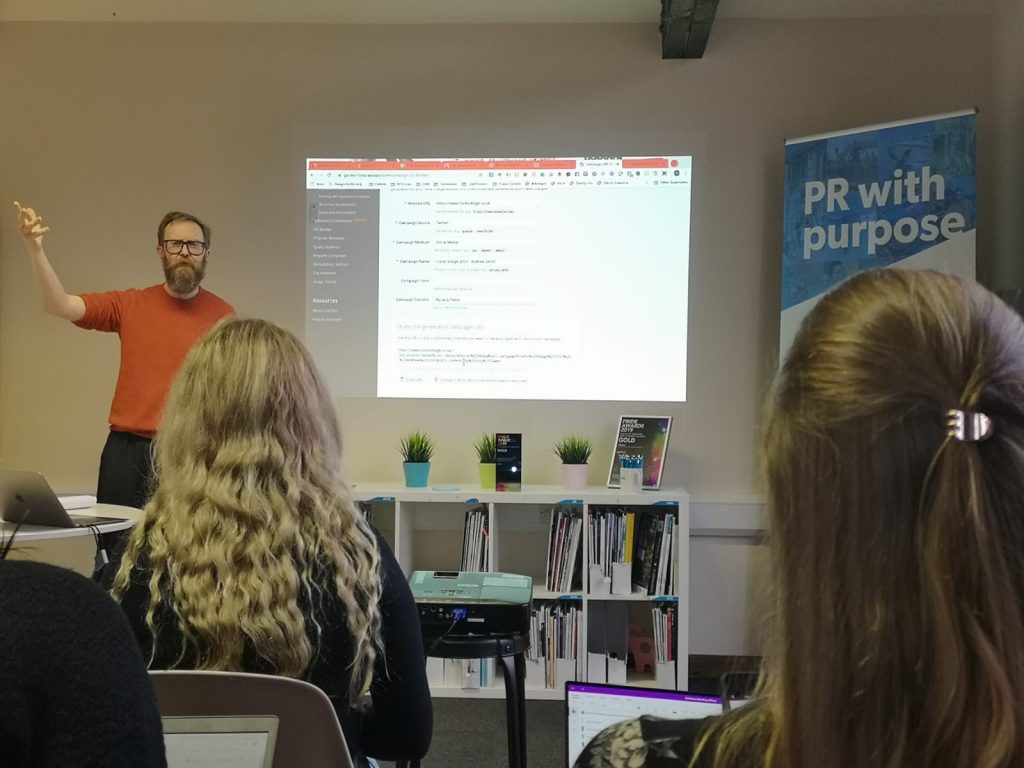
Our 8 top tips for Google Analytics
Earlier this week, the ADPR team participated in an insightful Google Analytics refresher training day with Social Media, Analytics and SEO expert, Andrew Smith from Escherman.
The engaging session explored the wealth of free analytics services that Google offers and provided a greater insight into user experience, tracking data, creating reports and measuring the effectiveness of online marketing strategies.
Google Analytics is one of the most popular pieces of digital analytics software and allows you to analyse in detail who the visitors to your website are, and, crucially, the actions they are taking. Using analytics effectively can increase conversions and the overall performance of your website, as well as providing you with important demographic data such as the gender, age, location, devices used and interests of your visitors.

ADPR’s 8 top tips to consider when setting up your Google Analytics page:
- Create a minimum of three “views” on your GA Page (maximum of 25 per website property), because the less “views” there are, the less accurate the data captured will be. A “view” is simply a different view of the same data set. This is helpful as each view can show a different set of reporting requirements. Views are typically created by copying a “master” set of data and then applying filters to the copy. To add more views, simply click the create view button.
- Make sure the “bot filtering” box is ticked as it’s not set by default and more than half of all online traffic isn’t human! So if you don’t tick the bot filtering box, your results might be highly inaccurate!
- Be sure to filter your employee visits, as often (especially in larger businesses) organic searches are made by those who work in the company, which as result, can massively impact on your site visit numbers and if you aren’t filtering out your internal team (on at least one view) you will be providing inaccurate website data in your reports!
- If you have a search bar on your website (which is highly recommended by the way as it makes it easier for customers to navigate your website) ensure your site search tracking is “on” so that Google is able to record what people are searching for on your website. This data gold dust will help you target your customers more efficiently in future marketing campaigns as you’ll get a greater understanding about what info your customers are looking for.
- Use campaign URL tracking on all social media and marketing channel activity to ensure it gets appropriately measured in your GA. If you aren’t using URL tracking codes for campaigns, your traffic from social media and email activity most likely isn’t getting classified correctly. It will probably be getting bumped in with “direct traffic” – skewing your results!
- Install Google Tag Manager. It is a free tool that simplifies the process of working with tags and allows you manage and input marketing tags on your website (or mobile app). A tag is part of the code you use to send data to Google Analytics or other third-party tools where you can keep track of your analytics. Once the account is created, the “Install Tag Manager” account code can be put onto your site.
- Create a free Google Search Console account. This will help you monitor, maintain, and analyse your SEO rankings along with other data. When creating the account, you can connect it to your GA account and view up to 16 months of historical data, including the elusive “keyword (not provided)” search term data GA doesn’t share with you!
- Create a Google Data Studio account to easily create beautifully designed dashboards that show your teams and managers exactly the information they need from your GA account!
We’d like to thank our clients who attended and Andrew Smith from Escherman for sharing his wisdom and time. We thoroughly enjoyed the training session and every team member came away feeling excited about the possibilities for Google Analytics in showing the effectiveness of our PR and marketing campaigns. We can’t wait to put our knowledge into action!
If you would like to read more on our consumer campaigns, please see ADPR’s Consumer PR 101
Social media is one of the most impactful and cost-effective ways to tell the world how brilliant your company is, but do you know how to cut through the noise? Now is the time to save yourself precious time and energy by signing up to our Social Media Engagement Success service. We’ll do the hard work of managing your channels leaving you free to sit back and reap the rewards.
We know that social media can be an essential growth tool for your company. Download our free Social Media Content Planner now and change how you engage with your audience!
